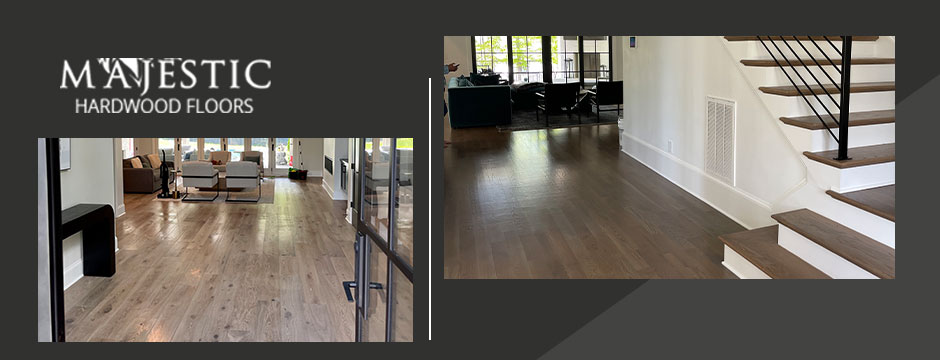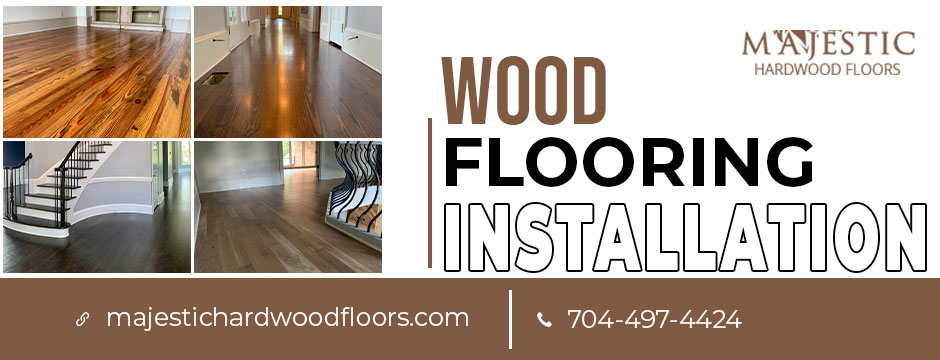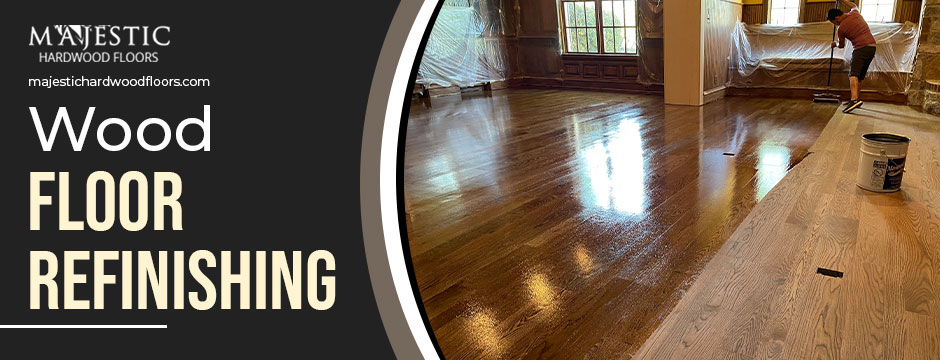The Importance of Subfloor Preparation in Wood Flooring Installation

When it comes to installing wood flooring, many homeowners and even some professionals tend to focus solely on the aesthetic aspects, such as the type of wood and the finish. However, one crucial factor that often gets overlooked is subfloor preparation. The subfloor, which is the layer beneath the visible wood flooring, plays a significant role in the longevity and performance of the finished installation. In this blog post by Majestic Hardwood Floor, we will explore the importance of subfloor preparation and the steps involved in ensuring a successful wood flooring installation.

Understanding the Subfloor
The subfloor refers to the layer of material that sits directly on the joists or concrete slab, providing a stable and even surface for the wood flooring. Its primary purpose is to support the flooring and distribute the weight and load evenly. The subfloor also acts as a moisture barrier and helps to minimize movement and noise.
Different Types of Subfloors
There are various types of subfloors commonly used in residential and commercial construction. Concrete subfloors are prevalent in basements and ground-level installations. Plywood subfloors, consisting of multiple layers of wood veneer glued together, are commonly found in above-ground applications. Particleboard subfloors, made from compressed wood particles, are less common but still used in some instances.
Assessing the Subfloor
Before installing wood flooring, it is crucial to assess the condition of the subfloor thoroughly. This step helps identify potential issues that may need to be addressed before the installation process begins. Evaluating the subfloor’s condition ensures that the wood flooring installation starts on a solid foundation.
Tools and Techniques for Subfloor Assessment
To assess the subfloor’s condition, several tools and techniques can be employed. Moisture meters can measure the moisture content of the subfloor, helping determine if moisture mitigation steps are necessary. A straightedge or level can be used to identify any uneven areas. In some cases, it may be necessary to remove a small section of flooring to inspect the subfloor more thoroughly.

Potential Issues with Subfloors
Subfloors can present several potential problems that can significantly impact the wood flooring installation. Moisture is one of the most significant issues, as excessive moisture can lead to warping, buckling, and mold growth. Unevenness in the subfloor can cause gaps or unevenness in the wood flooring. Structural issues, such as rot or weak spots, can compromise the stability and integrity of the entire installation.
Identifying Common Subfloor Problems
During the subfloor assessment, it is essential to look for common problems that can affect the wood flooring. These include moisture issues, such as excessive humidity or subfloor moisture levels exceeding the recommended threshold. Unevenness in the subfloor can be identified using a straightedge or level, which helps detect any high or low spots. Structural issues, such as rot or weak spots, may require further investigation or consultation with a professional.
Subfloor Preparation Techniques
Moisture Mitigation and Prevention
Moisture mitigation is a critical aspect of subfloor preparation. Before installing wood flooring, it is vital to test the subfloor’s moisture levels. If moisture levels are too high, measures such as vapor barriers, moisture barriers, or sealants can be employed to prevent moisture from damaging the wood flooring.
Leveling and Smoothing the Subfloor
To ensure a smooth and even wood flooring installation, any unevenness in the subfloor must be addressed. This can be achieved through various subfloor preparation methods. Sanding can be used to level minor imperfections, while self-leveling compounds can be applied to more significant irregularities.
Repairing Structural Issues
If the subfloor exhibits structural damage, it is essential to address and repair these issues before proceeding with the wood flooring installation. Subfloor damage, such as rot or weak spots, can be repaired by removing the affected sections and replacing them with new, sound materials. Additional reinforcement and stabilization techniques, such as adding support or sistering joists, may be necessary in some cases.
Subfloor Preparation Tips and Best Practices
Pre-installation Checklist
Creating a pre-installation checklist can help ensure that no crucial steps are overlooked during subfloor preparation. This checklist may include evaluating moisture levels, assessing the subfloor’s evenness, checking for structural issues, and gathering the necessary tools and materials.
Proper Cleaning and Debris Removal
Before installing wood flooring, it is essential to thoroughly clean the subfloor and remove any debris. Dust, dirt, and small particles can interfere with the adhesion of the wood flooring and compromise the overall quality of the installation.
Acclimating the Wood Flooring to the Subfloor Environment
Wood flooring is hygroscopic, meaning it can absorb or release moisture depending on the surrounding environment. To prevent issues such as expansion or contraction after installation, it is crucial to acclimate the wood flooring to the subfloor environment. This involves storing the flooring in the installation area for a certain period, allowing it to adjust to the humidity and temperature conditions.
Following Manufacturer’s Guidelines and Industry Standards
Every wood flooring manufacturer provides specific guidelines for subfloor preparation and installation. Following these guidelines is essential to ensure the best results and maintain any warranties associated with the flooring. Additionally, adhering to industry standards and best practices helps guarantee a high-quality and long-lasting wood floor installation service.
Benefits of Proper Subfloor Preparation
Enhanced Durability and Longevity of the Wood Flooring
Proper subfloor preparation significantly contributes to the durability and longevity of wood flooring. By addressing potential issues and creating a stable base, the flooring is less prone to damage, such as warping, buckling, or squeaking, which can occur when the subfloor is not adequately prepared.
Prevention of Issues Like Buckling, Warping, and Squeaking
Inadequate subfloor preparation can lead to various problems, including buckling, warping, and squeaking of the wood flooring. These issues not only compromise the aesthetics but can also create safety hazards and require costly repairs. Proper subfloor preparation helps minimize or eliminate these problems altogether.
Improved Aesthetics and Overall Quality of the Finished Installation
A properly prepared subfloor provides a level and smooth surface for the wood flooring, resulting in a visually appealing and high-quality finished installation. When the subfloor is even, the wood flooring lays flat and showcases its natural beauty. Additionally, a well-prepared subfloor helps prevent gaps or unevenness between planks, creating a seamless and professional appearance.
Minimization of Future Maintenance and Repairs
Investing time and effort in subfloor preparation can save homeowners from the inconvenience and expense of future maintenance and repairs. A well-prepared subfloor reduces the likelihood of flooring issues, minimizing the need for repairs or replacements down the line.
Professional Subfloor Preparation vs. DIY
Factors to Consider When Deciding Between Professional Help and DIY
When it comes to subfloor preparation, homeowners must consider various factors before deciding between professional help and a DIY approach. These factors include the complexity of the project, personal skills and experience, time constraints, and available resources.

Benefits of Hiring Professionals for Subfloor Preparation
Hiring professionals for subfloor preparation offers several advantages. Experienced professionals have the knowledge, expertise, and specialized tools necessary to assess and address subfloor issues effectively. They can ensure that the subfloor is properly prepared, reducing the risk of installation problems and future flooring issues.
Potential Challenges and Risks of DIY Subfloor Preparation
DIY subfloor preparation can be challenging and risky, particularly for homeowners without experience or specialized knowledge. Improper assessment or treatment of subfloor issues can lead to costly mistakes and compromises the overall quality and longevity of the wood flooring installation. Additionally, DIY projects may take longer to complete, potentially causing delays and inconvenience.
Final Thoughts
Proper subfloor preparation is a crucial step in achieving a successful and long-lasting hardwood floor installation. It ensures a stable and even foundation, enhances the durability and aesthetics of the flooring, and minimizes future maintenance and repair needs. While DIY subfloor preparation is an option, hiring professionals offers numerous benefits and reduces the risks associated with inadequate preparation. Prioritizing proper subfloor preparation sets the stage for a beautiful and enduring wood flooring installation that homeowners can enjoy for years to come.
Want to find out more? Visit us at Majestic Hardwood Floors!

